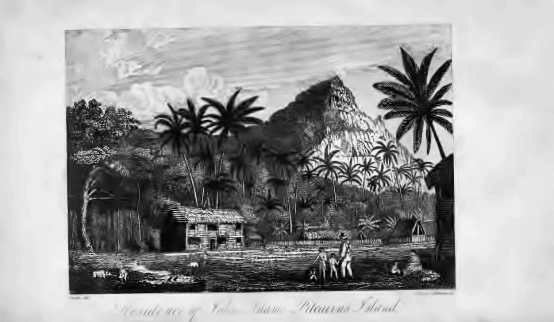The infamous mutiny aboard the HMS Bounty in 1789 remains one of the most captivating stories in maritime history. Of the twenty-five men left aboard the Bounty, four found themselves in a precarious situation.
Charles Norman and Thomas McIntosh, both carpenter’s mates, along with armourer Joseph Coleman and able seaman Michael Byrn, had remained loyal to Lieutenant William Bligh. However, when Bligh was set adrift in a 23-foot launch, there was no room for them, leaving them at the mercy of the mutineers.
As the launch drifted away, Bligh called out to them, promising, “Fear not, my lads; I’ll do you justice if I ever reach England.” This assurance, however, must have provided little comfort as the Bounty, under the command of Fletcher Christian, sailed eastward, abandoning their original mission to transport breadfruit plants to the West Indies.

On May 24, 1789, the Bounty landed at Tubuai, an island located approximately 350 miles south of Tahiti. The initial excitement of their new surroundings quickly turned sour as quarrels erupted among the crew, primarily fueled by disputes over the local women. The islanders, wary of the intruders, resisted their presence, leading to further tensions. After just a week, the Bounty set sail again, this time heading north to Tahiti, where they concocted a story about Bligh meeting Captain Cook and planning a settlement at Whytootakeen Island—a settlement that never existed, as Cook had been murdered in Hawaii a decade earlier.
Upon reaching Tahiti, the mutineers were met with open arms. The Tahitians, who revered Cook, were thrilled at the prospect of a new settlement nearby. They generously provided the Bounty with food, water, and even nine women, among other provisions. The ship departed once more, returning to Tubuai, where the mutineers attempted to establish a fort, ironically named Fort George in honor of the King. However, their efforts were marred by drunken brawls and the threat of a second mutiny.

The situation escalated when the Bounty men clashed with the Tubuaians, resulting in the deaths of sixty-six islanders, including six women. Realizing that their presence was untenable, the mutineers departed Tubuai in September 1789. The crew divided into two factions: fifteen men chose to remain on the island, while the other ten, including Christian, set sail on the Bounty. Joseph Coleman, loyal to Bligh, swam to shore as the ship left, desperate to escape the chaos.
The remaining mutineers settled in Tahiti, marrying local women and starting families. However, on the night of September 21, 1789, the Bounty’s crew cut the anchor rope and slipped away under the cover of darkness, taking with them nine mutineers, six Tahitian men, eleven women, and a baby—some of whom may have been taken against their will. Their goal was to find islands to the east, rumored to have been discovered by the Spanish, but they instead stumbled upon Pitcairn Island.
Pitcairn Island had been sighted earlier by the British sloop HMS Swallow in 1767, but it was mischarted by thirty degrees of longitude. Captain James Cook had attempted to locate it in 1773 but failed due to this error. The Bounty was deliberately run aground, set ablaze, and dismantled, allowing the settlers to establish a new life on the fertile island.
In the following two years, the fragile peace among the settlers shattered. One mutineer succumbed to illness, while another, driven mad, leaped from a cliff. Tensions escalated between the remaining mutineers and the Tahitian men, culminating in a violent confrontation that left six mutineers dead. The widows of the slain men sought revenge, killing all the Tahitian men, leaving only Alexander Smith, later known as John Adams, as the sole survivor of the Bounty crew.

In 1808, the American sealing ship Topaz discovered Pitcairn Island, where Captain Mayhew Folger and his crew encountered thirty-five inhabitants, primarily women and children. Among them was Thursday October Christian, the son of Fletcher Christian. When introduced to the crew, Adams, who had been living under the alias Alexander Smith, shared his story. Despite the discovery, he expressed indifference to being found, stating, “… he did not care for all the Navy of England could not find him.”
The island was eventually marked on navigational charts, leading to regular visits from ships bringing supplies. Adams, now known by his birth name, John Adams, became a patriarchal figure for the small community. He passed away in March 1829, forty years after the mutiny, leaving behind a legacy that continues to intrigue historians and maritime enthusiasts alike.
Today, Pitcairn Island remains home to a small population of around 48 people, descendants of the original mutineers and Tahitian women. The story of the Bounty mutiny serves as a poignant reminder of the complexities of human nature, survival, and the consequences of rebellion against authority. The legacy of the Bounty lives on, captivating generations with its tale of adventure, betrayal, and the quest for a new beginning.

